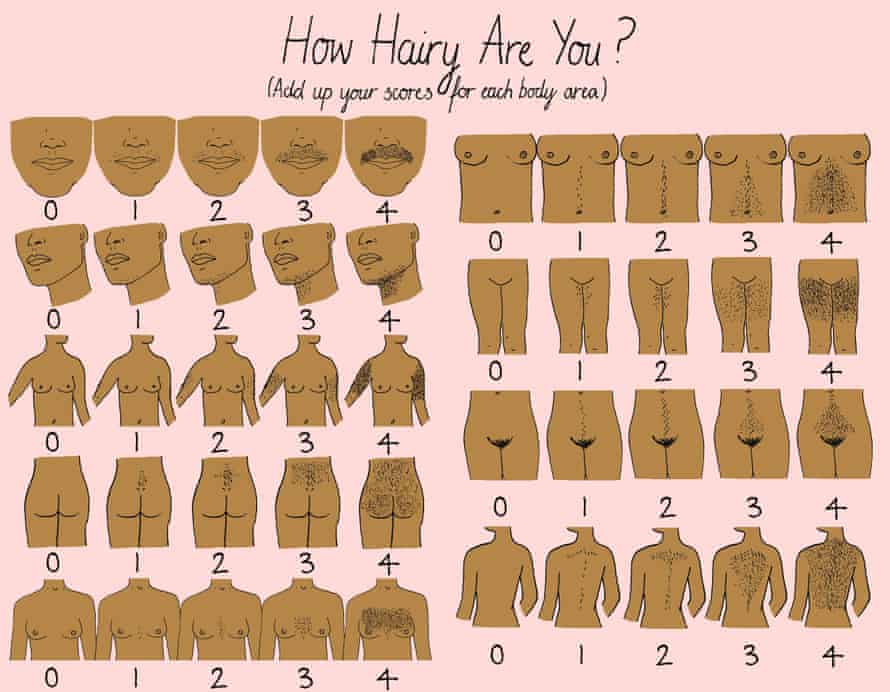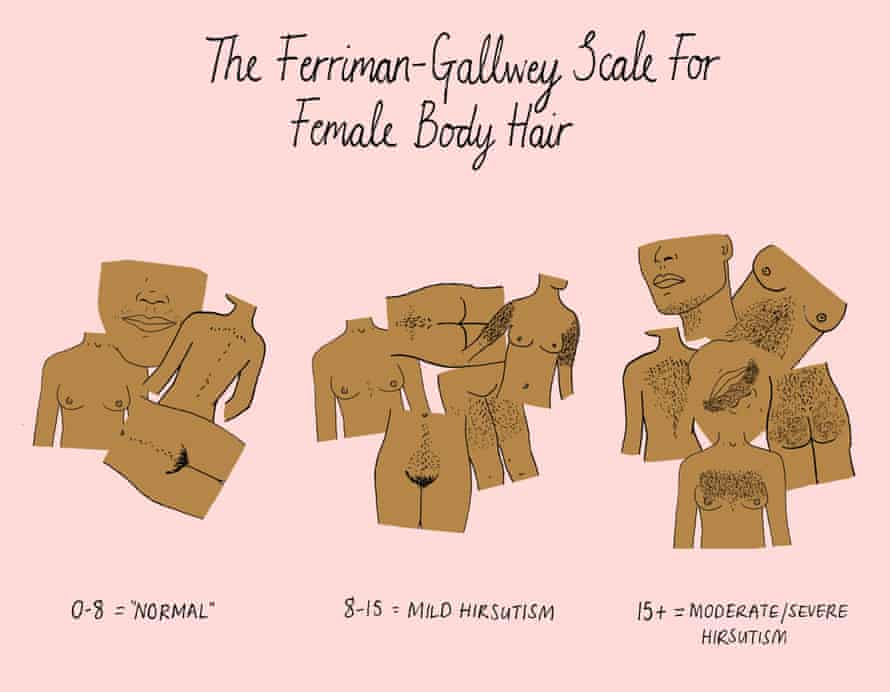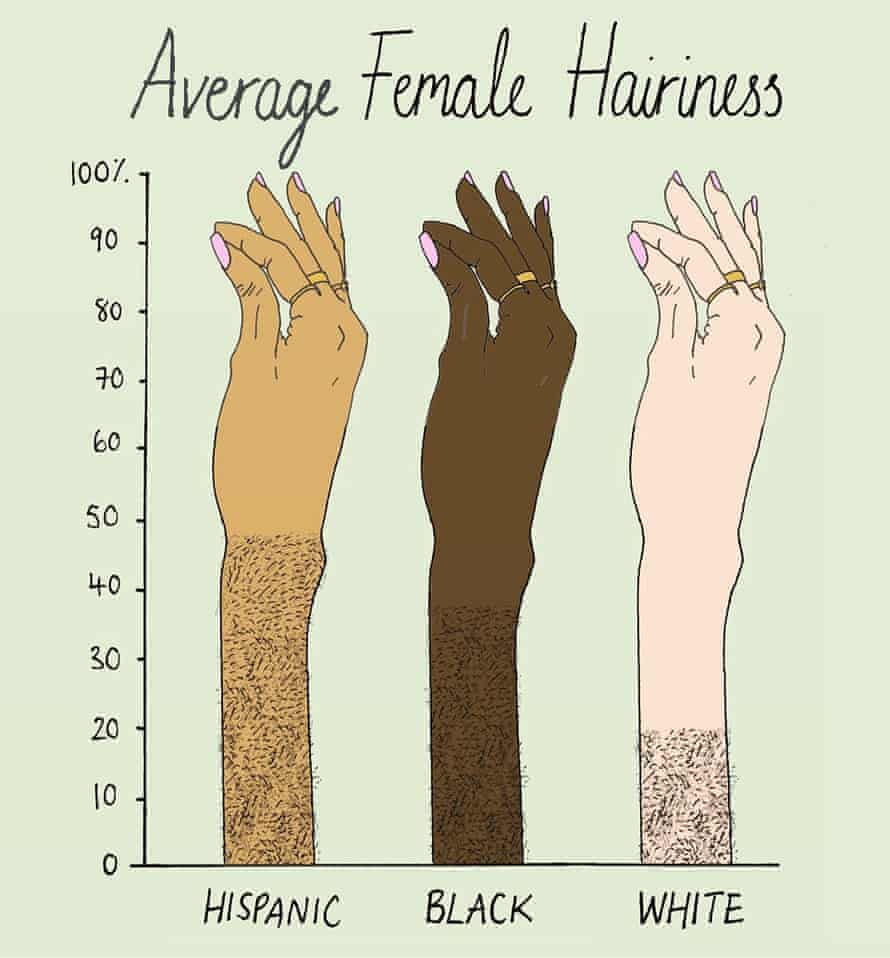what to do if your a girl and you have a mustache
W omen similar me have been keeping a secret. Information technology's a secret then shameful that information technology'south hidden from friends and lovers, so nighttime that vast amounts of time and coin are spent hiding it. Information technology's not a criminal offense we accept committed, it's a expletive: facial hair.
What can exist dismissed as trivial is a source of deep anxiety for many women, simply that'southward what female facial hair is; a serial of contradictions. It's something that's common all the same considered abnormal, natural for one gender and freakish for another. The reality isn't quite so clearcut. Merran Toerien, who wrote her PhD on the removal of female person torso pilus, explained "biologically the boundary lines on body hair betwixt masculinity and femininity are much more blurred than nosotros make them seem".
The removal of facial hair is but as paradoxical – the pressure to practice it is recognized by many women equally a stupid social norm and all the same they strictly follow information technology. Because these little whiskers stand for the almost basic rules of the patriarchy – to ignore them is to jeopardize your reputation, even your dignity.
Virtually one in 14 women take hirsutism, a condition where "excessive" hair appears in a male pattern on women's bodies. Only plenty more women who don't come up close to that benchmark of "excessive" withal feel securely uncomfortable about their body hair. If you're unsure whether your pilus growth qualifies every bit "excessive" for a woman, there's a measurement tool that some men have developed for yous.
In 1961, an endocrinologist named Dr David Ferriman and a graduate student published a report on the "clinical cess of body hair growth in women". More specifically, they were interested in last hairs (ones that are coarser, darker and at least 0.5cm/0.2 inches in length) rather than the fine vellus hairs. The men looked at 11 body areas on women, rating the hair from nada (no hairs) to four (extensive hairs). The Ferriman-Gallwey scale was built-in.
It has since been simplified, scoring just 9 body areas (upper lip, mentum, chest, upper stomach, lower tummy, upper arms, upper legs, upper back and lower dorsum). The total score is and then added up – less than viii is considered normal, a score of eight to 15 indicates mild hirsutism and a score greater than 15 moderate or severe hirsutism.

Illustration: Mona Chalabi Photograph: Mona Chalabi

Illustration: Mona Chalabi Photograph: Mona Chalabi
Most women who live with facial hair don't refer to the Ferriman-Gallwey calibration before deciding they have a problem. Since starting to research hirsutism, I've received over a hundred emails from women describing their experiences discovering, and living with, facial pilus. Their stories loudly echo one another.
Because terminal hairs kickoff to announced on girls effectually the age of viii, the experiences offset young. Alicia, 38, in Indiana wrote, "kids in my course would be like, 'Haha look at this gorilla!'", Lara was nicknamed "monkey" by her classmates while Mina in San Diego was chosen "sasquatch". For some girls, this bullying (more than frequently past boys) was their first realization that they had facial hair and that the facial hair was somehow "wrong". Side by side, came efforts to "set" themselves.
Génesis, a 24-year-old woman described her first memories of pilus removal. "In fourth grade, a boy chosen me a werewolf when he saw my arm hairs and upper lip hairs … I cried to my mom about it … she bleached my lower legs, my artillery, my dorsum, my upper lip and role of my cheeks to diminish my growing sideburns. I call back it itched and burned."
Later those get-go attempts come up many, many more – each with their own investment in time, coin and physical pain. The removal doesn't just brand unwanted pilus become away, it raises a whole new set of problems, particularly for women of colour. Non-white skin is more than probable to scar as a consequence of trying to remove hair.
Instead of reading or finishing homework on the automobile drives to school growing up, I would spend the entire length of the drive obsessively plucking and threading my mustache. Every day. – Rona K Akbari, 21, Brooklyn
On boilerplate, women with facial hair spend 104 minutes a week managing information technology, according to a 2006 British study. Two-thirds of the women in the written report said they continually check their facial hair in mirrors and iii-quarters said they continually check by touching it.
The report found facial hair takes an emotional toll. Forty percent said they felt uncomfortable in social situations, 75% reported clinical levels of feet. Overall, they said that they had a expert quality of life, but tended to give low scores when it came to their social lives and relationships. All of this pain despite the fact that, for the most part, women's facial pilus is entirely normal.
If I know I have visible facial hair, I'one thousand much more reserved in social situations. I try to encompass it up by placing my hand on my chin or over my mouth. And I'thousand thinking about information technology constantly. – Ashley D'Arcy, 26
Meanwhile, my 95-twelvemonth-old demented, deaf and blind Italian aunt sits in a nursing dwelling, and whenever I visit, she points to and rubs her chin, which is her way of communicating to have care of the hair situation. That's how I know she's still in there and she cares. I hope someone returns the favor in 40 years. – Julia, 54
There are, still, some medical conditions which can cause moderate or severe hirsutism, the most likely of which is polycystic ovary syndrome, or PCOS, which accounts for 72-82% of all cases. PCOS is a hormonal disorder affecting between 8 and 20% of women worldwide. In that location are other causes too, such as idiopathic hyperandrogenemia, a status where women have excessive levels of male hormones like testosterone, which explains another 6-15% of cases. .
Only many women who don't take hirsutism, who don't take any medical condition whatsoever, consider their hairs "excessive" all the same. And that's much more likely if you're a woman of colour.
The original Ferriman-Gallwey study, similar then much western medical research at the time, produced findings that might not apply to women of color (the averages were based on evaluations of 60 white women). More contempo research has suggested that was a big flaw, considering race does make a big divergence to the chances that a woman will have facial hair.
In 2014, researchers looked at high-resolution photos of 2,895 women'south faces. They found that, on average, the white women had less pilus than any other race and Asian women had the nearly. But ethnicity mattered also – for case, the white Italian women in the study had more pilus than the white British women.

But more than a gender thing, for me my pilus was about race/ethnicity. My hairiness really solidified how different I was from my peers. I grew up in the suburbs of Dallas. And although my school was pretty diverse, the dominant beauty norm was to be blonde and white. – Mitra Kaboli, 30, Brooklyn
These numbers might be helpful to women like Melissa who said her facial hair meant "I felt inferior, I was a 'dirty indigenous' girl".
But giving reassurance to indigenous minorities probably isn't why this research was undertaken. The written report was funded by Procter & Run a risk, the consumer goods visitor worth $230bn which sells, among other things, razors for women. They know that female hair removal is big business organisation.
Over the years, as women showed more of our bodies – every bit stockings became sheer and sleeves became brusque, at that place was pressure for these new exposed parts to exist hairless. Beginning in 1915, advertisements in magazines like Harper's Bazaar began referring to hair removal for women. Last yr, the pilus removal industry in the United states alone was valued at $990m. The business model but works if we hate our hair and desire to remove it or render it invisible with bleach (a norm just as unrealistic every bit hairlessness – brown women rarely take blonde hair).
When did we sign up to an platonic of female person hairlessness? The short answer is: women have hated our facial pilus for as long equally men have been studying it. In 1575, the Spanish physician Juan Huarte wrote: "Of course, the woman who has much body and facial hair (existence of a more hot and dry nature) is also intelligent but disagreeable and argumentative, muscular, ugly, has a deep vocalization and frequent infertility problems."
These signposts are strictest when information technology comes to our faces, and they extend across gender to sexuality too. According to Huarte, masculine women, feminine men and homosexuals were originally supposed to exist built-in of the opposite sex. Facial hair is one important way to understand these distinctions between "normal" and "abnormal", and so constabulary those boundaries.
Scientists accept turned their sexist and homophobic expectations of body hair to racist ones, as well. After Darwin's 1871 book Descent of Man was published, male scientists began to obsess over racial pilus types as an indication of primitiveness. One report, published in 1893, looked for insanity in 271 white women and found that women who were insane were more than probable to have facial pilus, resembling those of the "inferior races".
These aren't separate ideas considering race and gender overlap – black is portrayed in mass media as a masculine race, Asian as feminine. Ashley Reese, 27, wrote "function of my self-consciousness most my facial hair might also tie into some ridiculous internalized racism about black women being less inherently feminine". While Katherine Parker, 44, wrote, "It makes me feel very confused well-nigh my gender."Some women are pushing back. Queer women – those who are questioning heterosexual and cisgender norms – are already thinking exterior of the framework that shames female person facial pilus. Melanie, a 28-year-old woman in Chicago explained that as a queer woman "there is less of a prescription for what I should embody as a woman, what attraction between my partner and I looks like, which has helped immensely in coming to terms with my facial hair".
Social media accounts like hirsute and cute, happy and hairy and activists similar Harnaam Kaur are resisting these norms besides, by shamelessly sharing images of hairy female bodies. And fifty-fifty women who aren't rejecting these standards outright, experience deeply ambivalent almost them. "I sympathize, on a rational level, how inherently misogynistic information technology is to expect women to be constantly ripping hair out of themselves, pilus that grows naturally, wrote 1 adult female who, similar many I heard from, asked to remain bearding. "But I can't bring myself to take it and let it grow."
Some other wrote: "It's one thing to be a lilliputian heavy, or short, or both. But facial pilus? That's pushing information technology."
I'one thousand not about to estimate any woman for removing her facial hair. Despite knowing that I don't demand "help", I nonetheless get to see a beauty "therapist" each month. I pay huge sums and so she can zap me with a laser that amercement my pilus follicles. I've signed upwardly for a solution, fifty-fifty though I know that the problem doesn't actually exist. I lie there wincing with each shock as she asks me almost my weekend and says "Honey, are you lot sure you don't want me to do your arms likewise? They're very hairy."
Source: https://www.theguardian.com/fashion/2017/nov/30/female-facial-hair-if-so-many-women-have-it-why-are-we-so-deeply-ashamed
Post a Comment for "what to do if your a girl and you have a mustache"